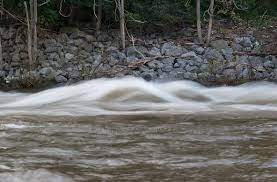Title of the Lesson: Exploring Ecosystems
Duration of the Lesson: 3 days (60 minutes per day)
Curricular Area/Topic included in the Lesson: Science – Ecosystems
Goal/s and Behavioral Objective/s for the Lesson: Exploring Ecosystems
- Goal: Students will understand the components and interactions within an ecosystem.
- Behavioral Objective: By the end of the lesson, students will be able to identify and explain the relationships between organisms, abiotic factors, and the environment within an ecosystem.
Standards/Benchmarks addressed in the Lesson:
- Next Generation Science Standards (NGSS):
- LS2.A: Interdependent Relationships in Ecosystems
- LS2.B: Cycle of Matter and Energy Transfer in Ecosystems
Essential Question/s:
- What are the different components of an ecosystem?
- How do living organisms and the environment interact within an ecosystem?
- How is energy transferred and matter cycled within an ecosystem?
Activities/Procedures for the Lesson:
Day 1 of Exploring Ecosystems :
- Opening (10 minutes)
- Engage students by asking them to share their experiences with nature and any observations they have made about the environment.
- Discuss the importance of studying ecosystems and their relevance to our daily lives.
- Introduction to Ecosystems (15 minutes)
- Present a multimedia presentation or video that introduces the concept of ecosystems.
- Define critical terms such as organisms, abiotic factors, and environment.
- Exploring Components of Ecosystems (20 minutes)
- Provide students virtual access to ecosystems (e.g., rainforest, desert, ocean) through interactive websites or virtual tours.
- In small groups, students explore and identify the living organisms, abiotic factors, and environmental characteristics specific to each ecosystem.
- Facilitate a class discussion to compare and contrast the different ecosystems.
Day 2 of Exploring Ecosystems:
- Review and Recap (10 minutes)
- Begin the lesson by reviewing the components of ecosystems discussed in the previous class.
- Ask students to recall the interactions between living organisms, abiotic factors, and the environment.
- Interactions within Ecosystems (20 minutes)
- Present a slideshow or video on ecosystem interactions, including predation, competition, and symbiotic relationships (mutualism, commensalism, parasitism).
- Engage students in a virtual game or simulation where they can explore and identify examples of these interactions within different ecosystems.
- Virtual Field Trip (25 minutes)
- Take students on a virtual field trip to a local ecosystem (e.g., a park, wetland, or forest).
- Provide guided questions and prompts for students to observe and reflect on the interactions they witness during the virtual field trip.
- Encourage students to take notes or capture screenshots to support their reflections.
Day 3 of Exploring Ecosystems:
- Reflection and Discussion (10 minutes)
- Begin the lesson by asking students to share their reflections from the virtual field trip.
- Facilitate a class discussion to identify and discuss the observed interactions and their importance within the ecosystem.
- Energy Flow and Matter Cycling (20 minutes)
- Introduce the concepts of energy flow and matter cycling within ecosystems.
- Use diagrams, animations, or virtual models to illustrate these processes.
- Discuss the roles of producers, consumers, and decomposers in energy transfer and the cycling of nutrients within ecosystems.
- Culminating Activity: Ecosystem Diagram (25 minutes)
- In small groups, students create virtual ecosystem diagrams using digital tools (e.g., Google Slides, Lucidchart).
- Each group should depict the components of an ecosystem, the interactions between them, and the flow of energy and cycling of matter.
- Students present their diagrams to the class, explaining their choices and connections.
Methods of Differentiation:
- Provide additional resources or readings for advanced learners to explore further.
- Offer graphic organizers or templates for students who may require extra support in organizing their thoughts.
- Assign roles within small groups to ensure active participation and collaboration.
Materials and Equipment when Exploring Ecosystems:

- Multimedia presentation/video
- Interactive websites/virtual tours
- Slideshow/video on ecosystem interactions
- Virtual game/simulation
- Virtual field trip resources
- Digital tools for creating ecosystem diagrams
- Internet access and devices for students
Assessment Plan when Exploring Ecosystems:
- Formative Assessment: Monitor student participation and engagement during class discussions, virtual activities, and the virtual field trip. Observe their ability to identify components and interactions within ecosystems.
- Summative Assessment: Evaluate the ecosystem diagrams created by the student groups based on the accuracy and clarity of their representations of components, interactions, and energy/matter flow.
Reflections on Learning Activities:
- As a reflection, ask students to respond to the following prompts:
- Describe one new thing you learned about ecosystems and their significance.
- How did the virtual field trip enhance your understanding of ecosystem interactions?
- Explain the importance of energy flow and matter cycling within an ecosystem.
References for Exploring Ecosystems
Goldberg, S. and National Geographic Partners (U.S (2019). Women : the National Geographic image collection. Washington, D.C.: National Geographic.
US EPA, O. (2015). EnviroAtlas Eco-Health Relationship Browser. [online] www.epa.gov. Available at: https://www.epa.gov/enviroatlas/enviroatlas-eco-health-relationship-browser
US EPA, O. (2017). EnviroAtlas Educational Materials. [online] www.epa.gov. Available at: https://www.epa.gov/enviroatlas/enviroatlas-educational-materials





